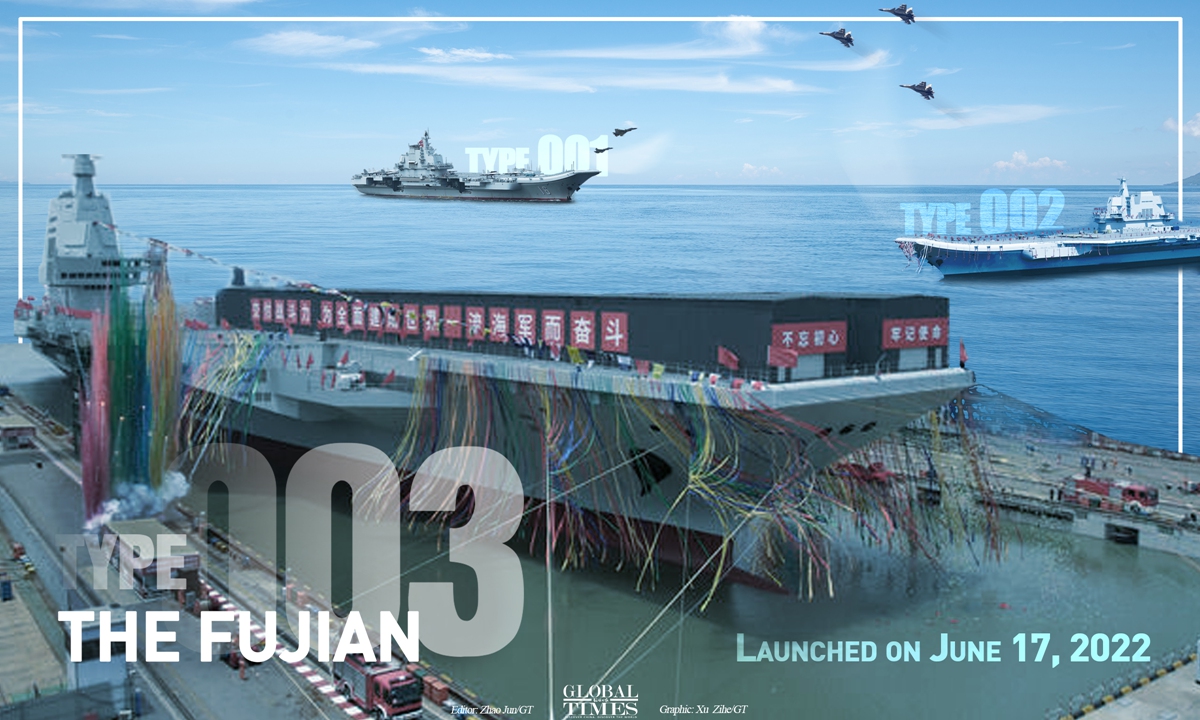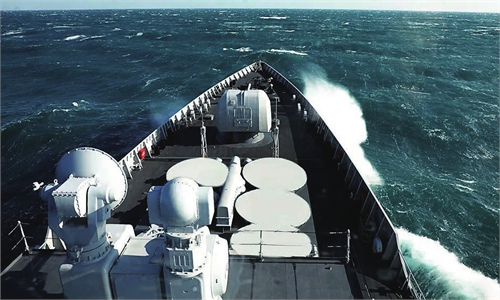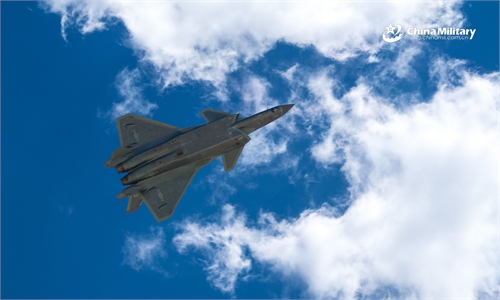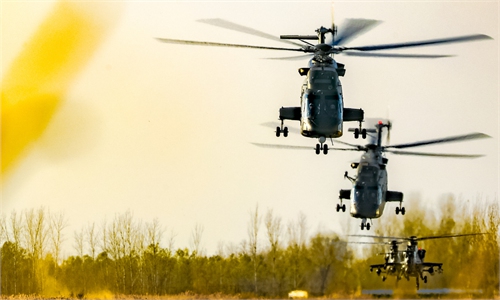
The Fujian Graphic: GT
In an epitome that highlights a busy year of missions and development, the Chinese People's Liberation Army (PLA) carried out several concurrent major military exercises at the end of 2022, including the China-Russia joint naval drill, far sea training of the Liaoning aircraft carrier group and the cross-service joint exercises around the island of Taiwan, with observers expecting the PLA to continue making strides and achieve its centenary goal in 2027, safeguarding the country's sovereignty, territorial integrity and development interests.
China and Russia on Tuesday wrapped up the weeklong Joint Sea 2022 naval exercise in the East China Sea, in which some of the PLA Navy's main combat and support surface, aerial and underwater elements joined their Russian counterparts in training courses including joint blockade, joint air defense and joint anti-submarine, according to a statement released by the PLA Navy on the day.
On Sunday, the PLA Eastern Theater Command conducted cross-service joint combat alert patrols and joint fire strike exercises in maritime and aerial areas around the island of Taiwan in a resolute response to the recent escalation in the US-Taiwan collusion, with the defense authority on the island reporting a record-breaking number of 71 PLA warplanes surrounding the island.
In the meantime, the Liaoning aircraft carrier group in its new prime - with two Type 055 10,000 ton-class large destroyers among others in the flotilla - has been operating in the West Pacific waters east of the island of Taiwan and south of Japan since December 16, hosting intensive fighter jet and helicopter takeoff and landing drills under the close watch of Japan's Maritime Self-Defense Force.
These simultaneous drills highlighted the PLA's intensive exercises throughout the year across the country.
Following US House Speaker Nancy Pelosi's provocative visit to the island of Taiwan in early August, the PLA hosted large-scale military exercises that blockaded the island of Taiwan almost entirely, and saw PLA ballistic missiles fly over the island for the first time.
China and Russia held several other drills, including two joint aerial strategic patrols in May and November featuring strategic bombers from both sides flying over the Sea of Japan, the East China Sea and the West Pacific, the Russia-led Vostok-2022 strategic drills in eastern Russia in September, and a joint naval patrol in the Pacific Ocean following the Vostok-2022.
In July, China and Pakistan held the joint naval drill Sea Guardians-2 off Shanghai, with the Pakistan Navy operating its newly commissioned Type 054A/P frigate built by China.
The intensive and often concurrent exercise schedules reflect that the PLA has grown in both size and capability, Song Zhongping, a Chinese military expert and TV commentator, told the Global Times.
These significant developments of the PLA have also benefited from China's advancements in technology, the arms industry and the country's overall economy, Song said.
On June 17, China launched the country's third aircraft carrier, the Fujian. Having a displacement of more than 80,000 tons, the vessel is the country's first one equipped with electromagnetic catapults and arresting devices, making China a step closer to the world's top level super carriers.
Ten years ago, the PLA commissioned its first aircraft carrier, the Liaoning, which was built from an unfinished Soviet hull. It is astounding to see how fast China's aircraft carrier program has progressed in these 10 years, observers said.
In 2022, two new Type 075 amphibious assault ships, the Guangxi and the Anhui, three new Type 055 large destroyers, the Anshan, the Wuxi and the Yan'an, and many other main surface combatants entered service with the PLA Navy. It means the PLA Navy has received more ships in one year than many other navies have in total.
At the Airshow China 2022, held in Zhuhai, South China's Guangdong Province in November, the J-20 fighter jet of the PLA Air Force for the first time put a static display in front of the general public, with many details visible. It was announced that the independently developed stealth aircraft has entered all Eastern, Western, Southern, Northern and Central theater commands, indicating that the fighter jet is now in mass production, with US media outlet Defense News speculating that China has likely built more than 200 J-20s, surpassing the number of the US' F-22s.
The PLA Air Force also displayed its new YU-20 aerial tanker and a new type of what seems to be air-launched hypersonic ballistic missile carried by the H-6K bomber at the event.
In the large-scale exercises around the island of Taiwan in August, many of these advanced weapons and equipment, including the J-20 and the J-16 fighter jets, the YU-20 aerial tanker, the H-6K bomber, the modularized multiple rocket launcher system, conventional ballistic missiles, as well as multiple types of destroyers and frigates, demonstrated the PLA's capabilities in solving the Taiwan question and denying external forces from interfering, experts said.
More to come
It was stressed at the 20th National Congress of the Communist Party of China held in October in Beijing that achieving the goals for the centenary of the PLA in 2027 and more quickly elevating the people's armed forces to world-class standards are strategic tasks for building a modern socialist country in all respects.
Looking into the future, the PLA will continue its rapid development aiming for the centenary goal in 2027, basically complete modernization by 2035 and become world-class by the mid-21st century.
After the US revealed in December its new stealth bomber, the B-21, China is also expected to eventually unveil its next generation strategic bomber, the H-20, which is the last missing piece in China's strategic nuclear capability, Fu Qianshao, a Chinese military aviation expert, told the Global Times.
When the H-20 is completed, it will be around the same level as, if not surpassing, the B-21, Fu said.
By 2027, the country's third aircraft carrier, the Fujian, will likely be ready for combat, and equipped with new aircraft, including carrier-based stealth fighter jets and carrier-based early warning aircraft, and more advanced vessels, including the next generation frigate and the improved version of the Type 055 large destroyer, might enter service, said analysts, who also expect nuclear power for China's potentially in-development new aircraft carrier.
With the development of new weapons and equipment in new domains and of new qualities, as well as the enhancement of joint combat capabilities as a system through realistic combat-oriented exercises, the PLA will become increasingly capable of safeguarding national sovereignty, territorial integrity and development interests amid future uncertainties, observers said.




